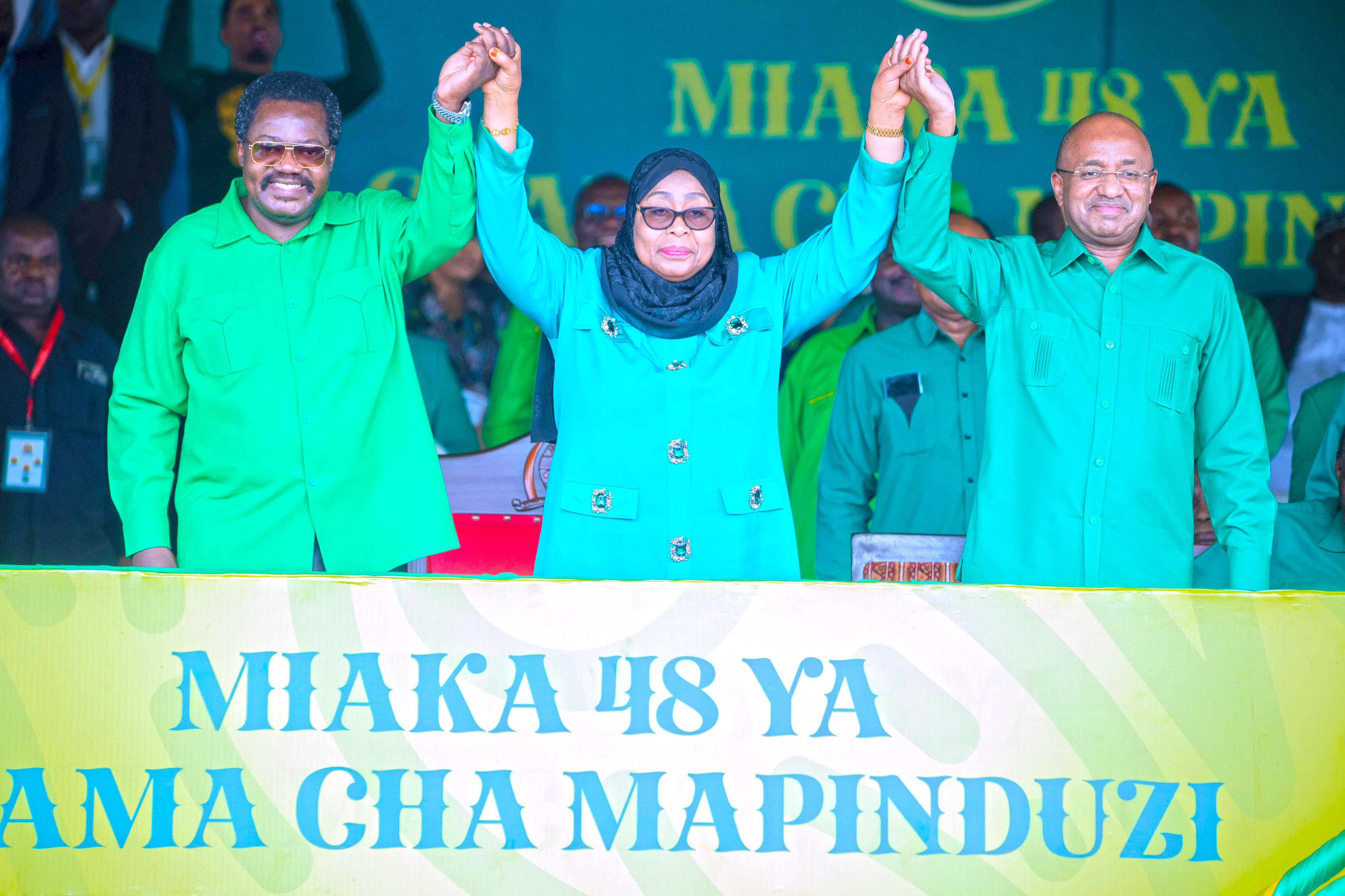Factors hurting cotton farming identified

Ministry of Agriculture, Food Security and Cooperatives deputy PS Yamungu Kayandabila (right) talks to Compaci Programme director Roger Peltzer during a Cotton Stakeholders’ Conference in Arusha yesterday. Looking on is Anne Sophie Poissot from the Food and Agriculture Organisation. photo | the citizen correspondent
What you need to know:
He underscored that cotton production is primarily by smallholder farmers who own between 0.5 to 10 acres, an average of 1.5 acres. Their farming is hand work-based and depends on rain.
Arusha. The government has admitted that low investment, inadequate extension services and lack of value addition are the major bottlenecks hindering the cotton sector’s progress.
Speaking at a Cotton Stakeholders’ Conference for the 7th Cotton made in Africa Competitive African Cotton Initiative in Arusha yesterday, ministry of Agriculture, Food Security and Cooperatives deputy permanent secretary Yamungu Kayandabila, said due to these factors, production has remained low.
Currently, he said Tanzania’s farmers produce less than one tonne per acre, far below the national target of producing 1.5 tonnes per acre by 2015.
“In terms of human resource, there is an inadequate number of extension officers…there is also the problem of inadequate financial services and access to credits and unreliable markets due to volatility of the cotton prices in the world market…these hitches hinder the sector’s growth,” he said.
According to the September 2013 Monthly Economic Review – published on Wednesday by the Bank of Tanzania (BoT), the country earned $143.4 million from cotton exports during the year ending August 2013, up from $109.8 million during a similar period last year.
This was despite a 9.1 per cent drop in prices from an average of $2.15 per kilo during the year ending August 2012 to $1.95 in the year to August 2013. His figures show that the cotton sub sector employs about 500,000 rural households.
He underscored that cotton production is primarily by smallholder farmers who own between 0.5 to 10 acres, an average of 1.5 acres. Their farming is hand work-based and depends on rain.
“The total land under cotton cultivation in Tanzania is estimated to be between 400,000 to 500,000 acres characterised by high fluctuations in production,” he added.
He noted that cotton growing areas in the country are Mwanza, Shinyanga, Singida, Mara, Kagera and Tabora that produce about 95 per cent, while Morogoro, Manyara, Tanga and Kilimanjaro produce 5 per cent of the total cotton produced.
For his part, Competitive African Cotton Initiative (Compaci) Programme director Roger Peltzer, said the aim of the conference was to strengthen the capacity of approximately 650,000 targeted African cotton farmers in Benin, Burkina Faso, Cote d’Ivoire, Cameroon, Malawi, Mozambique, Zambia, Zimbabwe and Tanzania.




